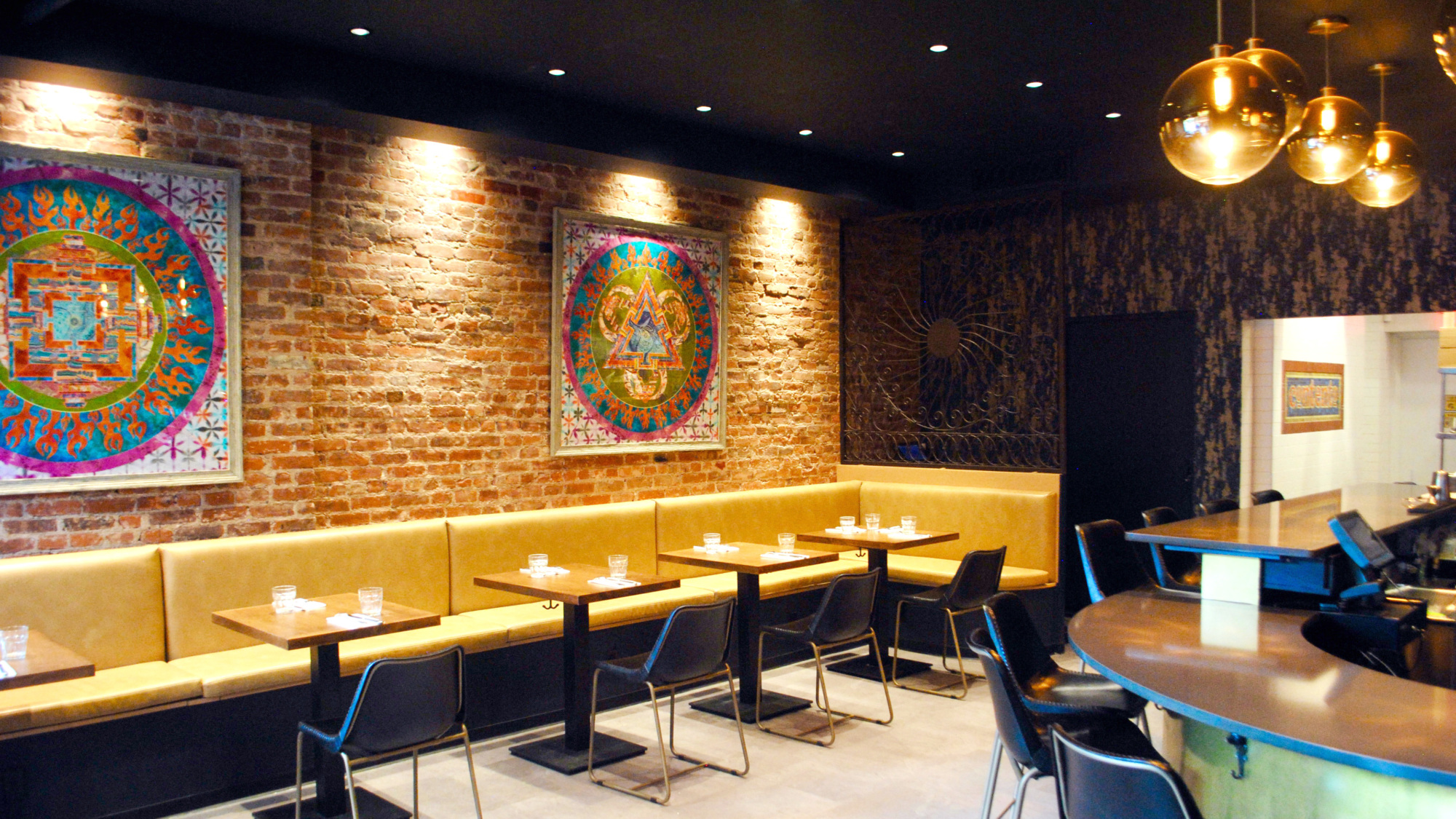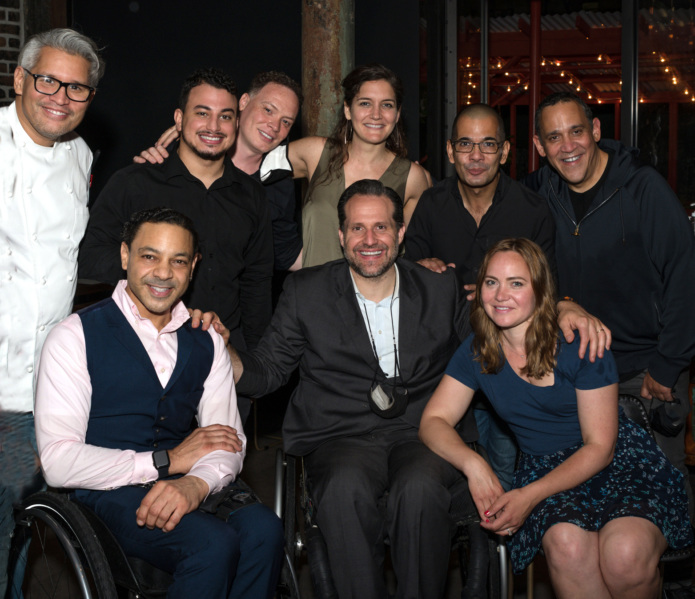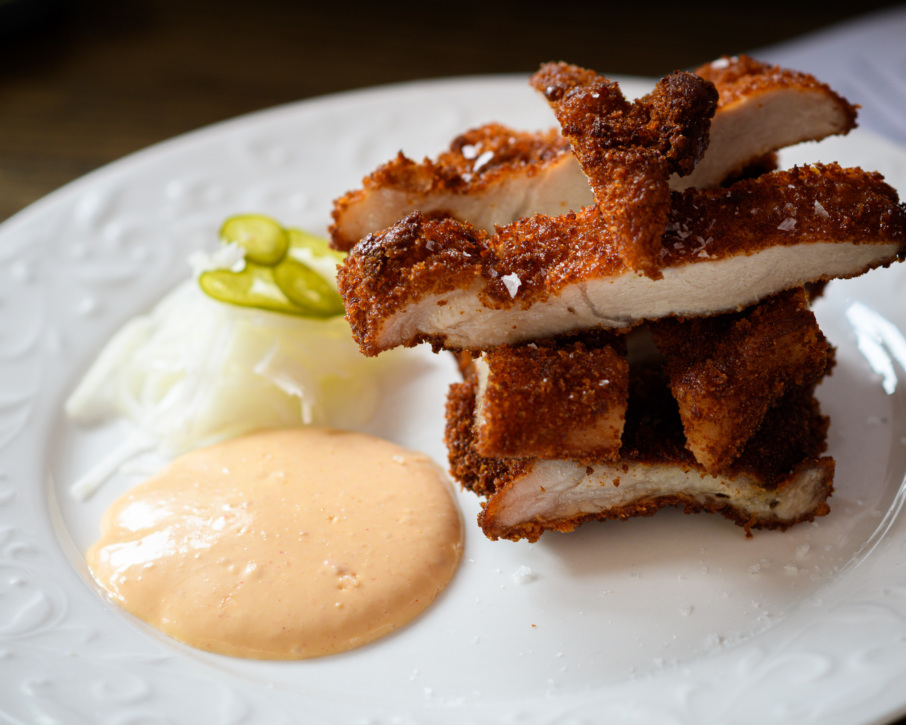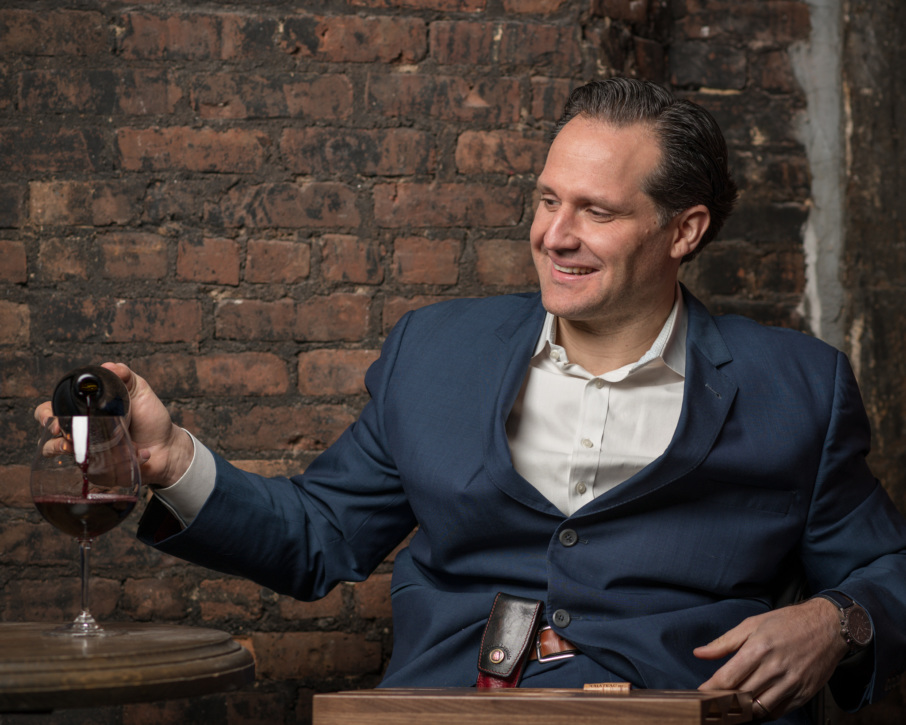
How Contento Offers a Blueprint for True Acessibility in Restaurants
Sommelier and New York native Yannick Benjamin grew up surrounded by relatives in the hospitality business, including his father, uncle, cousin. At Sunday family dinners, he says, “I just loved listening to them talk about restaurants, food and wine.” He was also an avid fan of the show “Cheers,” and dreamed of a place of his own, filled with friendly regulars. His career had just begun when, at age 25, he was in a car accident that paralyzed him from the waist down, putting him in a wheelchair.
He persevered in the industry “through my connections and being incredibly stubborn,” he says, focusing on what he could do rather than what he couldn’t. “If you look at a kitchen brigade, they’re all making up for each other’s weaknesses. So if my strength is to be incredibly hospitable and create an experience for a guest that a lot of people can’t, I can get help with things that I can’t do physically.”
Benjamin’s passion for meticulous hospitality is at the heart of Contento, the East Harlem restaurant he opened in June with partners George Gallego, Oscar Lorenzzi, Mara Rudzinski, and Lorenz Skeeter. A wine destination with a Peruvian-inspired food menu crafted by Lorenzzi (previously of the Waverly Inn), Contento is also a restaurant working to be accessible in every sense of the word, from the wheelchair-friendly table layout and bar to the low-markup wines. Here, Benjamin shares his thoughts on inclusivity in the restaurant world, Contento’s place in the neighborhood, and building an impactful wine list.

Resy: Tell me about some of the ways that Contento is more accessible than your average restaurant.
Yannick Benjamin: George is also a paraplegic, so we obviously had to make the space completely accessible for both of us. It’s a small space — it’s 40 seats max, and that’s squeezing it. So we sacrificed a lot of tables and chairs so people in wheelchairs can come in comfortably, and myself and George can work there comfortably. We could easily have three or four more tables, and that’s a lot of money to throw away. But I think in the long run, there’s definitely been a return on investment. I would say on a daily basis, five to 10% of our clientele has some kind of disability. Which isn’t a big number, but it’s a big number when you consider people with disabilities don’t usually like to go out to eat because they don’t want to deal with all the barriers.
But we also have to create a culture not just for people with physical disabilities, but those with intellectual disabilities, invisible disabilities, those who are part of the low-vision and blind community, or the hard-of-hearing and deaf community. Part of that is simple verbiage. It could be, “Do you need me to talk louder?” or, “Do you need me to lower the music?” We have a QR code on the menu for people in the low-vision community that they can scan to hear the menu read. It’s one thing to memorize all the grand crus from Burgundy or know the entire menu backwards and forwards. But it does require a certain skill set where you can make a guest feel at ease, and where they can confide in you and say “Hey, can you help me with certain things?”
With the constantly changing COVID rules, we saw that restaurants were able to make adaptations relatively quickly. Why do you think the industry hasn’t made inclusivity for those with disabilities a priority?
I think there’s this unconscious bias toward a certain type of clientele, which is people who are cultivated in the world of food and wine. But 61 million Americans have some kind of disability. That’s like, you know, one out of four basically. How the hell are we ignoring that? On top of that we work in an industry where we glorify restaurants when they say, “At the end of the year, I made 10% net profit.” 10% net profit is nothing. You’re only one coronavirus outbreak or Hurricane Sandy from closing. This will happen again. So, the old way doesn’t work. Whatever the new normal is, everything that we did before we have to strip down and start again.

Tell me about the food. What are some current standout dishes?
It’s kind of like a bistronomy of Peruvian food, that’s the best way I can describe it. It’s Peruvian-based with this flair for the Mediterranean. I mean we have a hamburger, and there’s nothing remotely Peruvian about it, but I think it’s kind of about understanding your audience and providing them with what they like. We have pork katsu with a daikon radish slaw, which is kind of a play on the weinerschnitzel, but it’s uniquely Peruvian in its own way, too. The ceviche with the leche de tigre is out of this world. And the chickpea panisse with the uchucuta, which is part of the botanas menu, that’s a dish that gives a little insight into how Oscar is playing with the Mediterranean, with the chickpeas, but also using the uchucuta from the Andes.
How does the wine list reflect the ethos of the restaurant?
The very first page of the wine list has a category called Wines of Impact, so all the wines are made by wineries that have a social or an environmental impact. So there’s a winery called Kishor Vineyards [in Israel], and the grape there is viognier, and everybody working at this winery has an intellectual disability. It’s styled like a kibbutz. The second section is an ode to the East Coast, called the East Coast Tour. So it’s wineries from Vermont, Maryland, Virginia, New York. As a restaurant, how the f— do you preach reducing carbon footprint and being environmentally friendly, and then you don’t have one local winery within a 50 or 100 mile radius? We have some wonderful terroir out here. We’ve also got a section called Les Vins Perdus, the Lost Wines, which are older wines with very low markups. I think this is a good opportunity for young people and people who don’t want to spend crazy money but still want to understand what older wines taste like. That’s a form of inclusivity as well.
What’s behind the name?
“Contento” means happy both in Spanish and Italian. And East Harlem, in the early 1900s, late 1800s, was predominantly Italian. Around the 1950s and 60s, it shifted to mostly Puerto Rican, South American, and Mexican. I wanted to pay homage to these immigrant groups, because East Harlem is what it is today because of them. So I was thinking about positive words, and I’m thinking of who I am, what I’ve tried to be, at all times positive and happy. And then I stumbled on “contento.”

How do you see Contento’s place in the neighborhood? What do you want it to be?
There’ve been a lot of people coming from other neighborhoods, like a destination restaurant. And there are a bunch of new buildings going up, but this is why I keep the prices low on the wine list. I want people from Harlem to feel comfortable and to want to come here. We are not the restaurant to say, “We’re here because we’re gonna make your neighborhood better.” We’re here to be a part of it, and we’re not a great restaurant without your support. I’m not there to gentrify, I know what that was like — I grew up in Hell’s Kitchen, and I got outpriced. We’re bringing something that we feel very passionately about, and we hope neighbors can come to our restaurant and feel comfortable enough to share their thoughts with us.
In the longer-term, what are your goals for Contento?
We want to use the space as a place where people with disabilities and people from other marginalized communities can develop other skill sets, and prepare for jobs in hospitality and beyond. We want to use the restaurant as a centerpiece to create other conversations about current events, or have guest lecturers like writers, professors. Food and drink is an excuse to gather and learn from each other and share stories. There are too many people that have a disability, they’re alone. And they need that comfort, that companionship.
This interview has been lightly edited for length and clarity.
Lauren Vespoli is a New York-based freelance journalist who has contributed to The New York Times, Vox, Atlas Obscura, and more. Follow her on Twitter. Follow Resy, too.
Discover More

Stephen Satterfield's Corner Table















